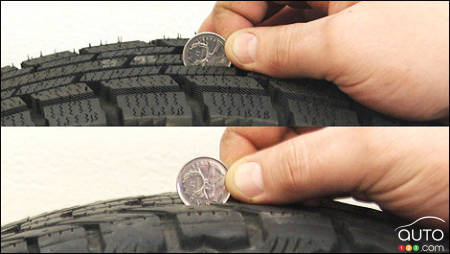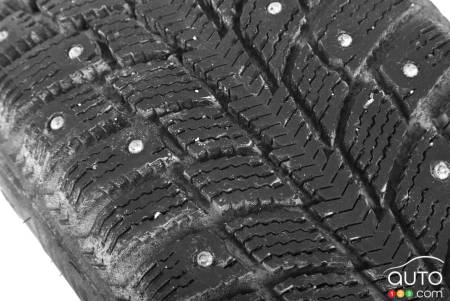As Bridgestone reminds us, winter car maintenance and safety goes beyond tires. However, if you landed on this particular page, it’s because you want to know if your winter tires are still capable of delivering the performance you expect on snow- and ice-covered roads.
No need to ask your local mechanic. Here are various methods to calculate winter tire wear and prevent it.
Tread wear indicators
A quick, easy way is to refer to the tire's tread wear indicators located inside the grooves. They are bars made of hard rubber lying sideways across the tread. When the tread is flush with the wear indicators―2/32” or 1.6 mm―the tire needs to be replaced since it no longer provides effective traction on snow and ice.
Pre-winter wear level
If the depth of the tread measures less than 6/32” or 4.8 mm before the start of winter, the tire likely won't last a full season, or the equivalent of about 10,000 km. Those who plan to stretch their rubber's life one more season just to save money may wind up paying for a lot more than a new set of tires after months of heavy snowfalls.
Not all winter tires wear out at the same speed. Snow tires will generally last longer than models designed for icy conditions. Compound quality also plays a key role in tire durability.
The quarter test
A classic way to measure winter tire wear is to use a quarter. Insert a 25¢ Canadian coin in one of the grooves with the caribou facing down. If you see the tip of its nose, it means the tread depth no longer meets 6/32”, so the tire probably won't last all winter or 10,000 km.

Preventing premature wear: Tire pressure
Properly inflated tires will reduce wear and save fuel. Check the tire pressure once a week if you do a lot of mileage; in any case, check at least once a month.
Inflate any tire that does not meet the recommended PSIs for your vehicle. The information can be found in your owner's manual or a specific label inside the driver's door frame.
Tire rotation, balancing, and alignment
Tires should be balanced and rotated every 10,000 km in order to prevent uneven tread wear. Directional tires must be rotated on the same side of the vehicle (front-rear), while non-directional tires must be rotated to form an X (ex.: front left to rear right). Tire alignment is recommended as soon as you feel that your vehicle pulls to the left or right, or when you notice uneven tread wear.
Auto123.com now invites you to consult our latest buying guides for winter tires:
The Best Winter Tires for Cars & Smaller SUVs in Canada for 2021-2022
The Best Winter Tires for Larger SUVs & Pickup Trucks in Canada for 2021-2022








